Whether you have a spacious backyard or just a few pots on your balcony, your garden is a reflection of the colors and patterns you love. The best way to add color to your garden is by planting flowers that bloom for years and continue to thrive. These flowers have blooming periods ranging from two weeks to several months. This way, you can have flowers in your garden that bloom for a long time and add vibrancy. Additionally, you can mix these perennial flowers with seasonal ones to create a more colorful and lively texture. For instance, you can combine them with winter-blooming garden flowers. The most important factor for these flowers is, of course, their placement. Flowers that need full sun should receive about six or more hours of direct sunlight, while those requiring partial sun need half that amount. Sun-loving plants won’t thrive in the shade, and shade-loving ones can scorch in the hot sun. In this blog post, we explore perennial garden flowers that can beautify your garden for years.
Christmas Rose
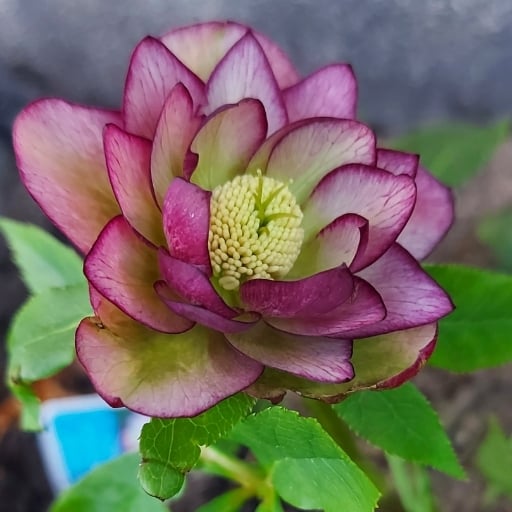
The Christmas rose (Helleborus orientalis) is a hardy and long-lasting plant that blooms even in cold weather. It thrives best in well-drained, humus-rich, slightly acidic soils in partial or full shade. The soil should be kept moist with regular watering, but waterlogging should be avoided. Fertilizing with organic matter in spring and fall, along with pruning wilted flowers and leaves, will help it thrive. Watch for fungal infections and pests. The Christmas rose can be propagated through seeds or root division and, with proper care, can retain its beauty in gardens for years. These striking flowers typically bloom in late winter and early spring. Despite their delicate appearance, hellebores are tough plants with green foliage that need shade but can tolerate morning sunlight.
Peony
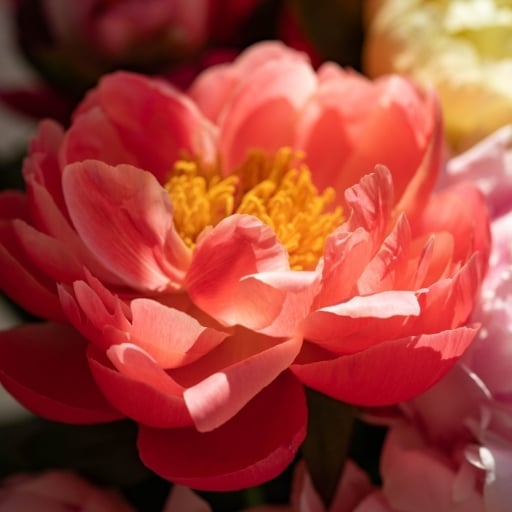
Peonies can live for decades, making them a long-lasting addition to your garden. These lush flowers bloom in late spring, with many varieties offering strong fragrances and a wide range of colors and forms. Ants on peonies are harmless, as they are only feeding on the nectar. Peonies can grow and bloom in the same spot for years with proper care. These sun-loving plants prefer well-drained, slightly acidic soils. It's important to plant roots at the correct depth, as planting too deep can negatively impact flowering. Regular watering, fertilizing, and pruning during the spring months will yield healthy, abundant blooms. Mulching the soil during winter helps protect the roots, and removing faded blooms in the fall will enhance next year’s blossoms.
Beardtongue (Penstemon)
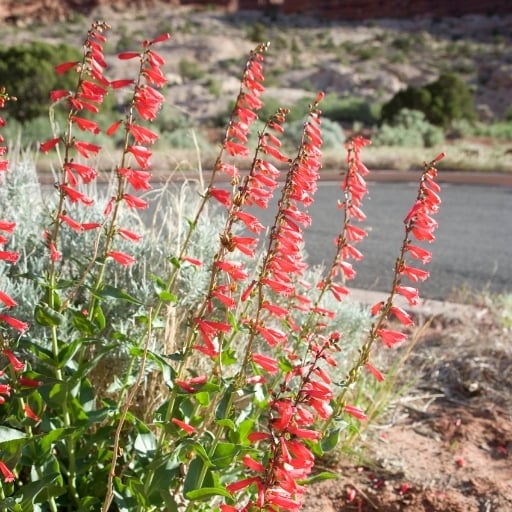
Beardtongue (Mertensia maritima) is a hardy summer flower that thrives in salty soils and coastal areas. It is easy to care for, requiring well-drained soil in full sun or partial shade. Regular watering and its preference for salty soil are key to its healthy growth. Overgrown parts should be pruned to maintain its shape. Beardtongue is drought-resistant, making it ideal for any garden. Its leaves can be deep green or burgundy, and its eye-catching pink flowers attract butterflies and hummingbirds, adding a lively touch to your garden.
Lavender
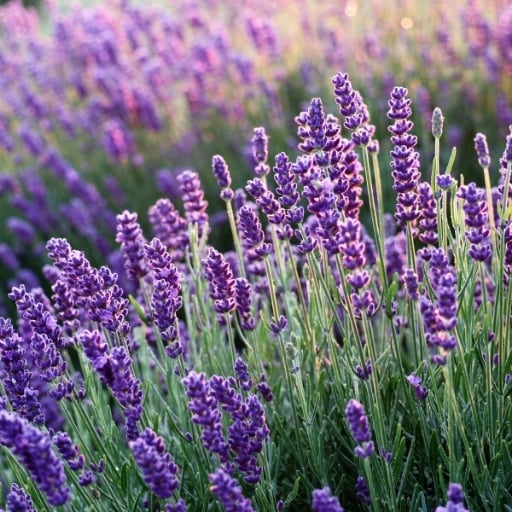
Lavender, known for its pleasant fragrance and beautiful flowers, is a long-lasting garden flower that can thrive with proper care. Lavender prefers sunny, well-drained soils and should be deeply watered once a week, allowing the soil to dry out completely between waterings. During spring and summer, it should be fed with a low-nitrogen fertilizer. Pruning after the blooming period encourages new shoots and helps maintain the plant's shape. Adding a thin layer of mulch around the roots prevents moisture buildup. With these care methods, lavender will retain its fragrance and beauty in your garden for years.
Bellflower
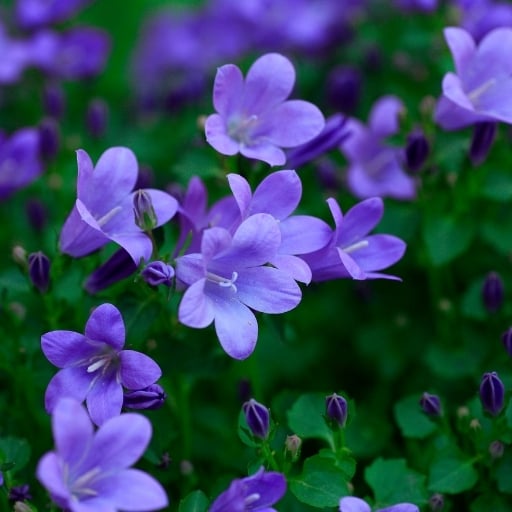
Bellflowers are resilient and elegantly beautiful, making them a popular choice for gardens. These perennial flowers thrive in sunny or partially shaded areas. In hotter climates, they prefer afternoon shade. They grow best in well-drained, slightly moist soils, which should be kept consistently damp with regular watering. Feeding with a balanced fertilizer once a week during spring and summer helps promote strong growth. Removing faded flowers encourages further blooming. Bellflowers can be protected during cold winters by applying a light layer of mulch, ensuring they bloom beautifully in your garden year after year.
Dahlia

Dahlia is a long-lasting and showy perennial flower known for its vibrant blooms. It grows best in sunny areas with well-drained, organic-rich soil. Regular watering during summer and weekly liquid fertilizer applications enhance blooming. In regions with harsh winters, dahlias can be dug up and stored before the first frost, to be replanted the following spring. Regularly removing wilted flowers encourages more blooms and helps the plant stay healthy. Dahlias can also last long in vases, making them ideal for cut flowers. In northern gardens, dig up the tubers after the first frost kills the foliage, and replant them in the spring.
Balloon Flower
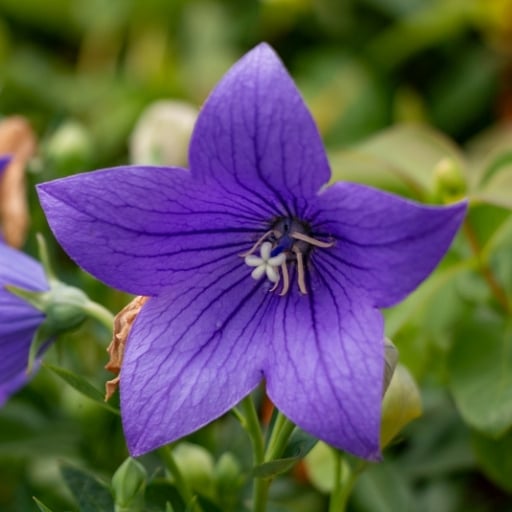
Balloon flower (Platycodon grandiflorus) is a hardy, easy-to-care-for perennial plant known for its large, star-shaped flowers that bloom in summer. It thrives in sunny or partially shaded areas and prefers well-drained, slightly acidic soils. Regular watering is necessary, ensuring the soil does not completely dry out. The plant has deep roots, so dig a sufficiently deep hole during planting. Even in cold climates, the plant's roots remain viable underground during winter and sprout again in spring. Its adorable balloon-like buds transform into star-shaped flowers in shades of blue, white, or pink, adding charm to gardens or pots.
Anemone
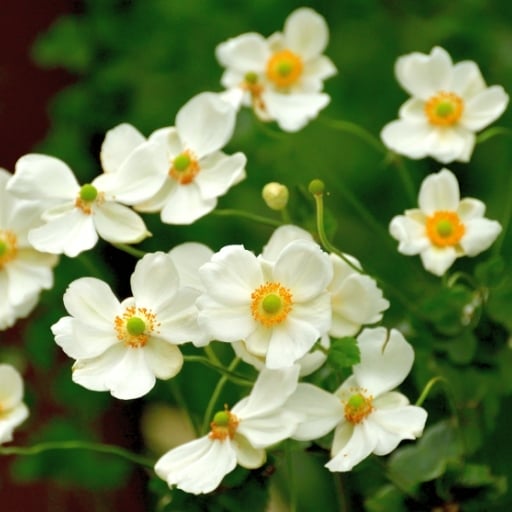
Anemones are perennial garden flowers admired for their delicate beauty and variety. They are highly resilient and can bloom for years under the right conditions. Anemones thrive in sunny or partially shaded areas with well-drained soil. Regular watering, particularly during summer, keeps the soil moist but not overly saturated to avoid root rot. Feeding with balanced fertilizer during the flowering period ensures healthy and abundant blooms. Known as windflowers, their graceful pink or white flowers atop tall stems bring elegance to gardens and homes.
Geranium
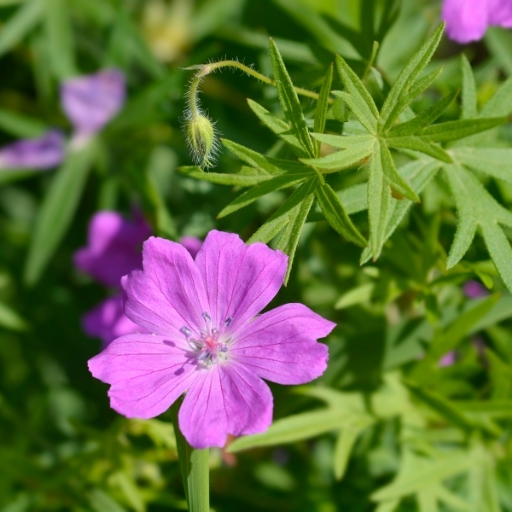
Geranium (Pelargonium) is a hardy and long-lasting plant, often used for decorative purposes in gardens and balconies. Proper care includes regular watering and planting in well-drained soil. Weekly pruning of faded flowers and yellowed leaves helps the plant remain healthy and vibrant. Regular fertilization can extend the blooming period and enhance overall health. These tough plants can tolerate poor soil and cold weather. Geranium leaves emit a spicy aroma, making them a lovely addition to any garden.
Poppy
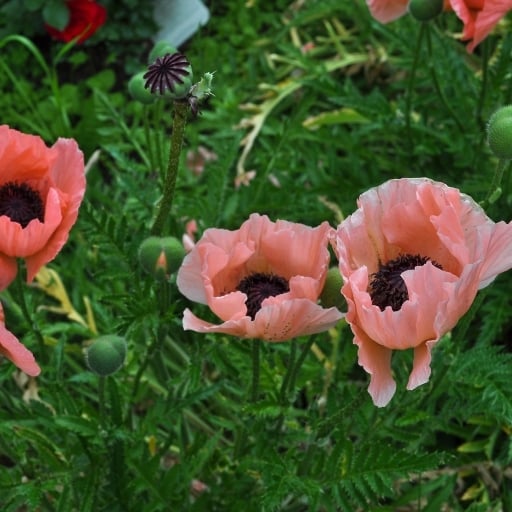
Poppies are vibrant red flowers known for their striking appearance. Native to the Mediterranean, they thrive in sunny locations and well-drained soil. Poppy seeds are sown directly into the soil, and the flowers usually bloom in late spring or early summer. These drought-tolerant plants require minimal watering, allowing the soil to dry out between waterings. Resistant to pests and diseases, poppies are low-maintenance and can self-seed to bloom again in subsequent years. Butterflies are attracted to their cheerful blooms, making them a delightful addition to any garden.
Lungwort
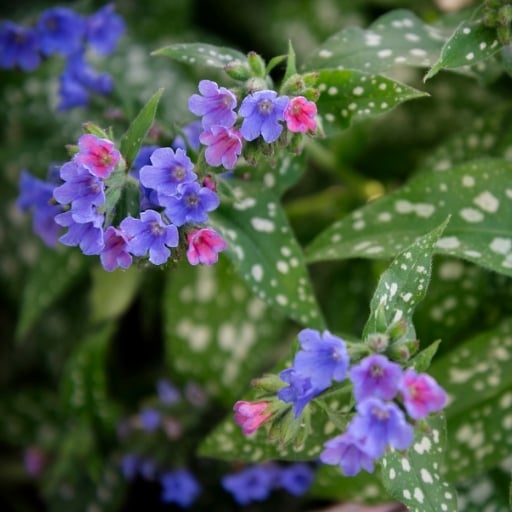
Lungwort is a hardy and long-lasting plant that thrives in shaded or partially shaded areas. Its blue, pink, and white flowers bloom in spring, adding a splash of color to gardens. This plant prefers humus-rich, moist soil. Regularly cleaning wilted leaves and flowers helps maintain its appearance and encourages further blooms. Lungwort is resistant to diseases and pests, making it a low-maintenance choice for gardens. Its leaves often have silver spots, adding decorative value even when not in bloom.
Sage
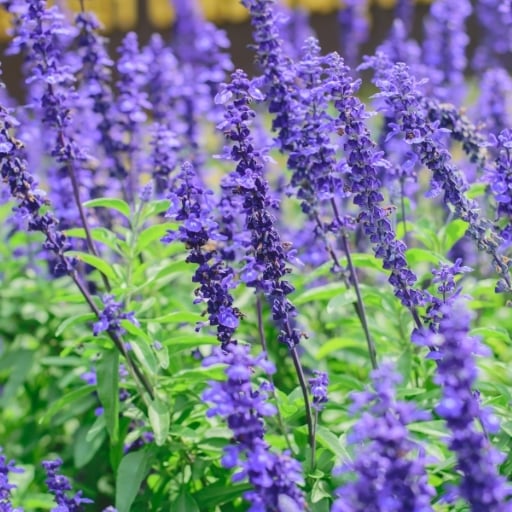
Sage is a hardy and long-lasting plant known for its aromatic leaves and pleasant scent. In addition to being a perennial plant, it is also very easy to care for. Sage thrives in sunny or partially shaded areas and prefers well-drained soil. It is drought-tolerant but should be watered regularly during spring and summer, ensuring that the soil does not completely dry out. During winter, watering can be reduced. Pruning encourages bushier and healthier growth. Additionally, sage is highly resistant to pests and diseases, so the use of chemical treatments is generally unnecessary. Regularly harvesting fresh leaves for use in cooking or tea makes it a practical and decorative addition to your garden.
Lilyturf
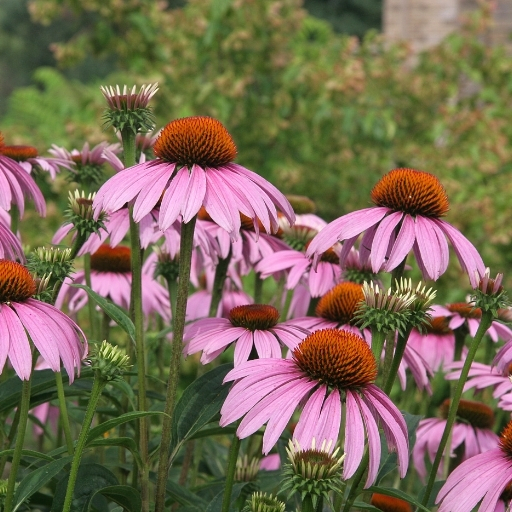
Lilyturf (Liriope muscari) is a popular ground cover plant known for its resilience and low-maintenance requirements. This perennial thrives even in deep shade and is highly drought-tolerant. While well-drained soil is important, it can adapt to various soil types. During spring and summer, regular watering promotes its growth, but mature plants require less water. Minimal care includes annual pruning and occasional fertilization. In addition to its landscaping use, lilyturf is also effective in preventing erosion. It blooms with vibrant colors such as magenta, coral, and warm pink. Heights range from 30 cm to 90 cm, so it’s important to select the right location. Full sun is necessary for blooming.
Buttercup (Ranunculus)

Buttercup, also known as ranunculus, is a popular ornamental plant celebrated for its durability and elegant appearance. These flowers thrive in moist, cool environments with well-drained soil and regular watering. To avoid overwatering, ensure the soil dries slightly between watering. Ideal locations provide morning or evening sunlight, as direct midday sunlight may be too harsh. During the blooming period, regular fertilization supports healthy and abundant growth. Removing wilted flowers helps the plant direct energy to new blooms. Buttercup flowers come in various colors, featuring delicate, paper-like petals. Depending on the climate, they should be planted in spring or fall and dug up in colder regions to be replanted in spring.
Tickseed (Coreopsis)
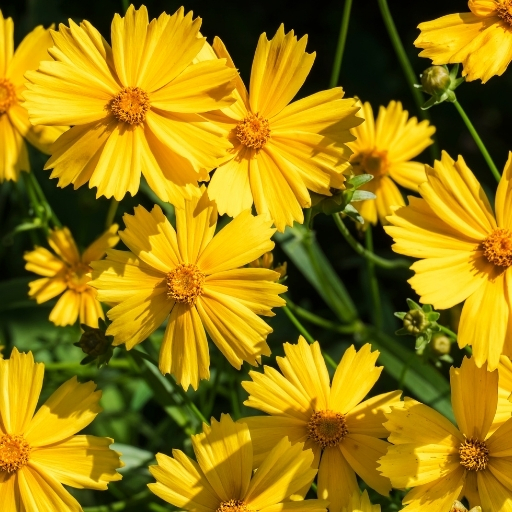
Coreopsis, commonly known as tickseed, is a hardy, low-maintenance perennial. It is frequently chosen for gardens and flower beds due to its long blooming period and vibrant yellow, pink, or red flowers. It thrives in sunny locations with well-drained soil and requires minimal watering, making it drought-tolerant. Regularly removing dead flowers during spring and summer prolongs its blooming period. In winter, mulch can be added to the root area for protection. Coreopsis is resistant to pests and diseases, making it an excellent choice for brightening gardens with minimal effort.
Catmint (Nepeta)
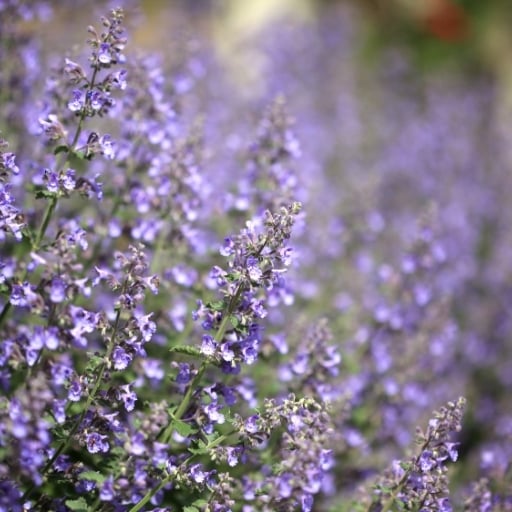
Catmint (Nepeta) is a hardy, low-maintenance perennial plant valued for its resilience and aromatic foliage. It grows best in sunny areas with well-drained soil and requires minimal watering. Allowing the soil to dry out between waterings is sufficient. In spring and summer, it produces blue-purple flowers, and pruning encourages bushier growth. It is highly resistant to pests and diseases. Additionally, catmint attracts cats and can serve as a natural alternative to catnip. Its long-lasting blooms and attractive gray-green foliage make it an excellent addition to gardens.
Yarrow (Achillea)

Yarrow (Achillea) is a durable and easy-to-care-for perennial. It thrives in sunny areas with well-drained soil and requires minimal watering, making it drought-tolerant. Watering during spring and summer and light fertilization once a year are sufficient for its growth. Yarrow blooms from mid-summer to fall with clusters of yellow, pink, white, or red flowers. Deadheading encourages further blooming and keeps the plant tidy. Yarrow is resistant to pests and diseases and attracts beneficial insects, contributing to the garden’s ecosystem. Its colorful and vibrant blooms make it a favorite for adding beauty to gardens with minimal care.
Phlox
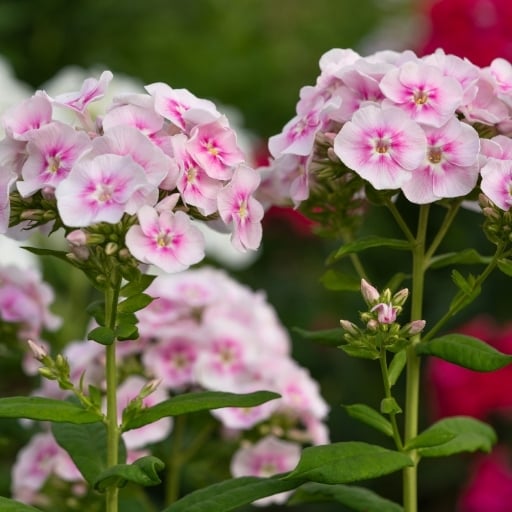
Phlox is a perennial plant that creates a riot of colors in gardens. Typically blooming from mid-summer to fall, it grows best in full sunlight and moist, well-drained soil. Regular watering and nutrient-rich soil ensure healthy growth. In hot and humid climates, spacing between plants improves air circulation and helps prevent fungal diseases. Deadheading faded blooms extends the flowering period. In winter, applying a light layer of mulch protects the roots, ensuring the plant’s return the following year.
Bergamot (Monarda)
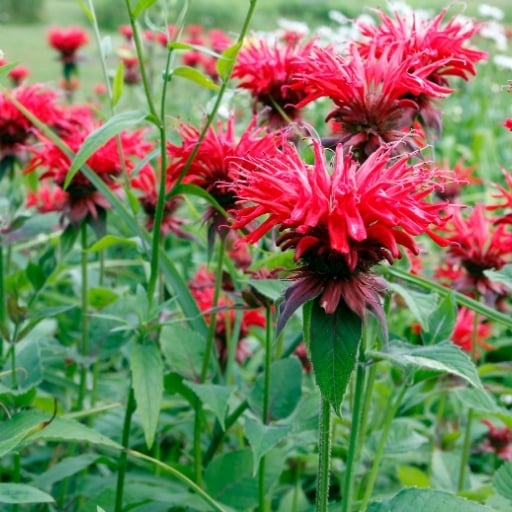
Monarda, commonly known as bergamot or bee balm, is a perennial plant known for its long-lasting blooms and vibrant flowers. It grows well in sunny areas with moist, well-drained soil. Blooming from mid-summer to fall, Monarda flowers come in striking red, pink, purple, and white hues. Weekly watering is sufficient, and pruning after the blooming period promotes bushier growth. The plant is resistant to diseases, but ensuring adequate spacing between plants prevents fungal issues. Monarda attracts butterflies, hummingbirds, and bees, making it a lively addition to any garden.
In this blog, we’ve explored various perennial garden flowers that will bring beauty to your garden for years. By paying attention to their specific sunlight, water, and soil needs, you can ensure your plants remain healthy and vibrant. Combining different flower types creates a colorful and dynamic garden throughout the year. Each plant’s unique care requirements contribute to a thriving and picturesque flower garden that you can enjoy for a long time. You can also find suitable pots for these flowers by clicking here. Caring for and nurturing your garden flowers ensures their durability, offering you a peaceful and colorful living space.